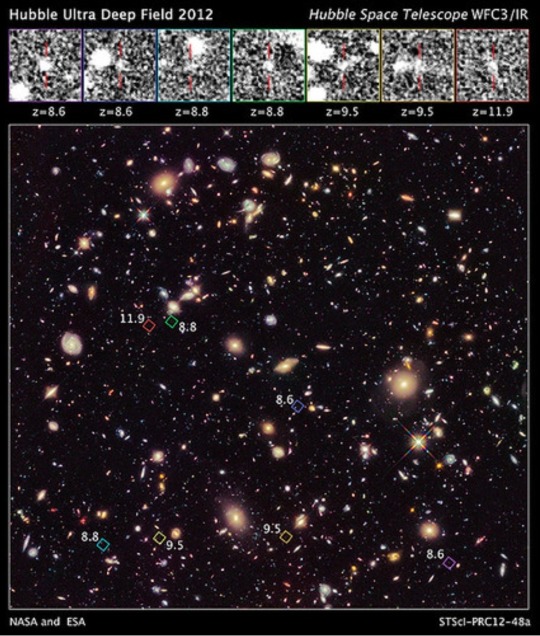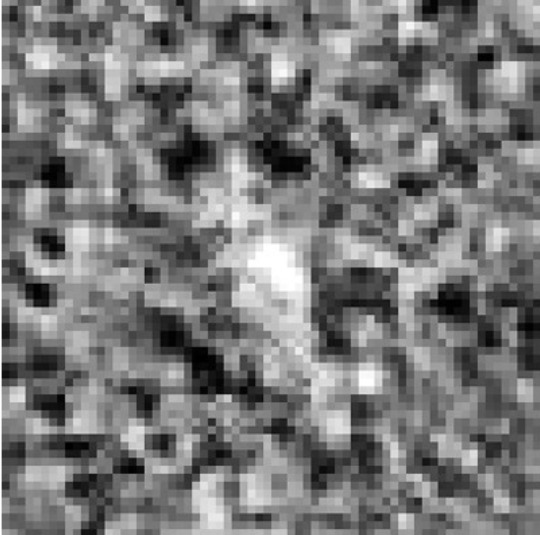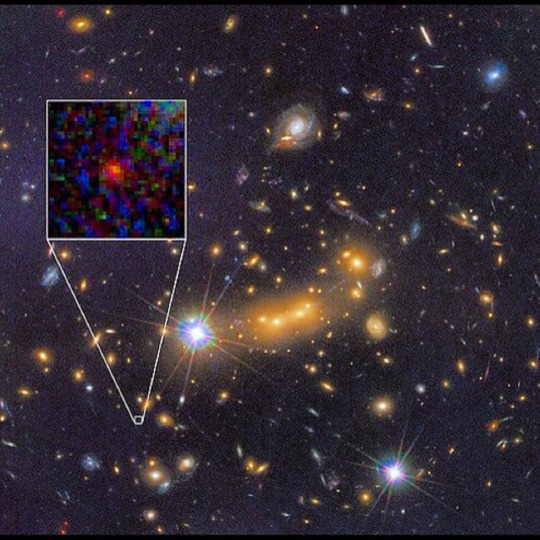#constellation fornax
Explore tagged Tumblr posts
Text

Krnica valley, Kranjska Gora, Slovenia
(Gear used listed below)
urosfink
#slovenia#astrophotography#milky way#constellations#Cameras: Nikon D600a#Nikon Z6a + Nikon Z6a II#- Trackers: Fornax Lightrack#Benro Polaris#MSM Nomad#SA 2i#- Lenses: Sony 14 1.8 GM#Sigma 20 1.4 Dg Dn#Tamron 35 SP 1.4#Tamron 70-200 G2#Samyang 14 2.4AF#Nikor Z 50 1.8S#curators on tumblr
1K notes
·
View notes
Text
So I was watching a Let's Play of Homeworld: Cataclysm, and there's this fleet from the Fornax system.


And I was like "Wait a second..."

Are you fucking kidding me?!?
#mass effect#homeworld#homeworld cataclysm#like I know fornax means “furnace” in Latin and it's also the name of a star constellation but still this is so damn funny to me xD
13 notes
·
View notes
Text
The Concept designs for the people
Now I am done having y'all wait on the concept art for this series. I'll show you all the Concept art I have so far on the heroes!! (so far, I only have a few down, but they help give you an idea of what I'm aiming at).
As a reminder, the concept currently is that these people made a wish upon a star, and that star materialized into a little creature they transform with. So the creatures are named after stars in Constellations, while the human represents the constellation the star is from. For example, If I was to wish upon Skat, a star in Aquarius, my whole hero design would be of Aquarius.

Lucia, I planned for her to be Andromeda, the chained princess. So, I tried my best to make her outfit not only elegant and easy to fight it but comes across like a princess. The chains are added as an accessory due to the original story of Andromeda.

Kami, I planned for her to be Fornax, the furnace. This was a challenge, but I just wanted to give her an outfit that looks like she can dance in it, perfect for it she's dancing in somewhere hot. Her weapon, however, I'm planning to be this huge oven fan, which keeps the whole Fornax theme.

Nia, I planned for her to be Pyxis, the compass. Pyxis is specially a sailor's compass, so it made sense to draw her in a slight sailor outfit (and yes, my inner Sailor Moon fan was hyped about this). However, I struggled a bit since I wanted to make sure it looked like it was its own thing and not something from Sailor Moon. I hope I accomplished that since I love this design the most!

Luisa, I planned for her to be Leo. Sure, Leo sounds masculine, but female lions are the ones that do the most in the prides! To be, it felt only fitting that a woman would represent the lion constellation. I would also like to think, that the constellations don't care what gender their hero is. I also loved giving her things that resemble a tail and ears when it's just fabric. The "ears" are just a bow, and her "tail" is just the back of her top going down into a thin piece of fabric. Luisa's design also changed the least from the original concept for Spirit Animals!
That is all the heroes... how about I show the main villain? mmmm maybe not, I'll let the reveal of them be a big surprise
#art#astronomy#concept#magical#magical boy#magical girl#magical hero#wish#wish upon a star#wishing#stars#constellations#andromeda#leo#fornax#pyxis
4 notes
·
View notes
Photo

Inner Ring of Galaxy NGC 1097
This galaxy is located 45 million light-years from Earth in the constellation Fornax. Eris has captured the gaseous, dusty ring that sits right in the center of the galaxy.
The bright spots on the ring are stellar nurseries. This image was captured through four different filters by Eris' state-of-the-art infrared imager, the Near Infrared Camera System, or NIX, which will replace the Naco imager used until now.
To put Nix's resolution into perspective, this image details a patch of sky less than 0.03% the size of the full moon.
Credits: Martin Kornmesser/Eso
#art#photography#ring#glitter#galaxy#NGC 1097#ESO#stars#universe#astrophotography#cosmos#cosmic#eris#infrated#space telescope#martin kornmesser#stellar#fornax#constellation
70 notes
·
View notes
Text
It is a common error that many faiths believe the souls of the dead depart this plane of existence for some mythical heaven or hell. In fact, the souls of the dead go to UDFj-39546284, a high-redshift Lyman break galaxy in the constellation Fornax, about 32.7 billion light years away. When asked why the dead from across the universe should all be converging on this one faint galaxy, NASA astrophysicists said “it’s like an eel thing,” and refused to elaborate further.
17K notes
·
View notes
Text
I love doing research about stars and constellations so I can assign names with fitting meanings to characters
1 note
·
View note
Text
ᡣ𐭩˘ᵕ˘ random constellation-themed asks
because these ones are still getting reblogged to this day
ara ⟢ what do you think makes a monster? lyra ⟢ when do you feel most at ease? pegasus ⟢ what is your "light at the end of the tunnel"? cygnus ⟢ did you build forts when you were a kid? What did they look like? aquila ⟢ what's your favorite cheesy joke? delphinus ⟢ what does your name mean, and why was it given to you? pavo ⟢ what's your favorite commercial? sagittarius ⟢ what is something random that most people don't know about you? hydrus ⟢ which of the four seasons is the worst suited for your personality and why? andromeda ⟢ what is a world record you think you could totally beat if you really wanted to? fornax ⟢ what quality does a person need to have for you to instantly like or click with them? puppis ⟢ what's the most stupid / disappointing / bad movie or tv show you have ever seen? capricornus ⟢ what's your funniest relationship/friendship dealbreaker? vulpecula ⟢ what did you think adulthood was like in your teens? auriga ⟢ if you could live anywhere in the world for a year, where would you want to go? serpens ⟢ if you had the opportunity to be immortal, would you take it? why (not)? cetus ⟢ what's a common practice in your social circle or family which you noticed is uncommon outside of your circle? orion ⟢ what is a red, a beige and a green flag of yours? ursa minor ⟢ if you could live multiple lives of your choosing, what would they look like? who would you be, where would you live and what would you be doing? asks are open :)
#bee’s ask games#ask game#ask games#bee's ask games#asks#ask#question games#question game#constellations#constellation
413 notes
·
View notes
Text
Roevember Day 1 - Name


Fornax Val'ethtue - or Fyrstyrn (Fire Star) Dotharl, if following the naming conventions of Roegadyn and Au Ra. “Fornax” is Latin for “furnace,” and is also a constellation. One might believe that they are a Hellsguard, but they’re a Sea Wolf! Curious. (I definitely did not originally look at Roe names when I first made her. shhh) The embodiment of an immovable object that harnesses and is driven by their strong emotions, their rage, their need to love and survive. One of two of Hydaelyn's fiercest champions, Fornax lives up to their title through and through. Despite intimidating appearances and all, she bears a deeply caring and loving, adventurous heart. One may find them being happily smothered by the stray cats of Limsa...
a little written intro to accompany the name prompt! say hi to my beloved butch au roe, fornax :)
roevember prompt list
#fornax#roevemberxiv#roevemberxiv2024#ffxiv#gpose#au roe#our time is here............... beloved roevember!!!!!!!#(now with fornax's design and lore being significantly more fleshed out compared to last year. EXCITED)
158 notes
·
View notes
Photo

2024 November 13
Barred Spiral Galaxy NGC 1365 from Webb Image Credit: NASA, ESA, CSA, Janice Lee (NOIRLab) - Processing: Alyssa Pagan (STScI)
Explanation: A mere 56 million light-years distant toward the southern constellation Fornax, NGC 1365 is an enormous barred spiral galaxy about 200,000 light-years in diameter. That's twice the size of our own barred spiral Milky Way. This sharp image from the James Webb Space Telescope's Mid-Infrared Instrument (MIRI) reveals stunning details of this magnificent spiral in infrared light. Webb's field of view stretches about 60,000 light-years across NGC 1365, exploring the galaxy's core and bright newborn star clusters. The intricate network of dusty filaments and bubbles is created by young stars along spiral arms winding from the galaxy's central bar. Astronomers suspect the gravity field of NGC 1365's bar plays a crucial role in the galaxy's evolution, funneling gas and dust into a star-forming maelstrom and ultimately feeding material into the active galaxy's central, supermassive black hole.
∞ Source: apod.nasa.gov/apod/ap241113.html
83 notes
·
View notes
Text

Spiral Barred Galagxy NGC1365" - Deepsky 3411mm LRGB - Constellation Fornax
#galaxies#galaxy#astronomy#nasa#astronomers#universe#astrophotography#nasa photos#astrophysics#outer space#nasawebb#hubble space telescope#deep sky#love and deepspace#sky photography#sky#solar system#space exploration#space#science#science facts#planetary science#space science#planetary nebula#planets#cosmos#the universe#our universe#international space station#space photography
179 notes
·
View notes
Text
Hello! I understand that naming characters can be difficult, I also understand that when we create AU's in which a character is trans or hiding and need to create a deadname/fake name it can be a struggle. HOWEVER-
When it comes to naming Black OC's or giving characters like Sirius and Regulus genderbent/deadnames I will not take any excuses for things like "Siriana" and "Regina". That is about the only family in canon who already HAS a naming convention, and yes, I realise not all of them follow it. However most DO.
So! For your perusal, I have taken the liberty of spending two weeks of my life scrolling Wikipedia to find a list of constellations, star names and star nicknames that could be used instead! Please use them I beg of you.
As a helpful guide, any names already used in canon are starred. Any names that MIGHT be used in canon (it's been ages since I've read the actual books, forgive me if I've missed any) are double starred.
And without further ado I present...
Skew's list of perfectly acceptable Star Names from a-z:
- Andromeda *
- Antlia
- Apus
- Aquila/ Aquilae
- Ara
- Aries
- Auriga
- Alpheratz
- Almach
- Altager
- Agena
- Ancha
- Altair/ Alnair
- Ari
- Alanac
- Arcturus *
- Asellus
- Alazal
- Asterion
- Adhara
- Armus
- Avior
- Argo
- Achird
- Agena
- Asteroth/ Ashtaroth
- Amansinaya
- Acrux
- Athebyne
- Altais
- Alsafi
- Achernar
- Azha
- Alhena
- Alphard *
- Ashlesha
- Algol
- Ascella
- Antares
- Apollyon
- Alya
- Alasia
- Alycone
- Atlas
- Asterope
- Atria
- Alcor
- Aniara
- Alula
- Alsephina
- Arcalis
- Borealis
- Betelgeuse
- Bellatrix *
- Bosona
- Caelum
- Carina
- Cassiopeia **
- Centaurus
- Cepheus
- Cetus
- Circinus
- Columba
- Corvus
- Cygnus *
- Capella
- Celaeno
- Caroli
- Chara
- Castra
- Canopus
- Castula
- Collum
- Calvera
- Cursa
- Castor
- Cadens
- Chason
- Ceginus
- Cymbae
- Chechia
- Cynosura
- Delphinius
- Draco *
- Dolones
- Diphda
- Denebola
- Eridanus
- Elgomaisa
- Eltanin
- Ebla
- Electra
- Errakis
- Fornax
- Fortunae
- Felixvarela
- Franz (yes, legitimately)
- Felis
- Formosa
- Gemini
- Gliese
- Gomeisa
- Gemma (again, yes, legitimately)
- Gnosia
- Geminga
- Gorgonea/ Gorgona
- Gildun
- Hercules
- Hydrus
- Hydra/ Hydria
- Hydor
- Haedus
- Hunor
- Helvetios
- Hyades
- Hyadum
- Hoggar
- Horna
- Izar
- Isis
- Innes
- Itonda
- Irena
- Indus
- Illyrian
- Juza
- Karaka
- Kastra
- Kitalpha
- Kursa
- Koeia
- Kornephoros
- Lacerta
- Leo
- Lepus
- Libra
- Lynx (totally legit. A constellation, in fact)
- Lyra
- Lucida
- Lanceator
- Lancea
- Leonis
- Lucitania
- Mirach
- Mensa
- Monoceros
- Musca
- Mira
- Macondo
- Manus
- Meres
- Meridiana
- Moldoveanu
- Musica
- Moriah
- Mebsuta
- Meissa
- Morava
- Miram
- Media
- Merope (yup, Voldemort's mum had a more Black name than Narcissa)
- Maia
- Norma
- Nembus
- Nova
- Nervia
- Nicolaus
- Naledi
- Nosaxa
- Nash
- Natasha (still Legit)
- Octans
- Ophiuchus
- Orion *
- Osiris
- Ogma
- Pavo
- Pegasus
- Phoenix
- Pictor
- Pisces
- Pyxis
- Promethium
- Postrema
- Phoenicia
- Petra
- Princeps
- Pollux **
- Praecipula
- Polis
- Pipirima
- Polaris
- Porrima
- Rigil/ Rigel
- Rostrum
- Rastaban
- Rutilicus
- Regulus *
- Revati
- Rapeto
- Saggita
- Scorpius *
- Serpens
- Sextans
- Sirius *
- Sarin
- Sargamatha
- Stribor
- Sinistra
- Solaris
- Shaula
- Sterope
- Spica
- Syrma
- Speedy Mic (not one I would recommend but a legitimate star name nonetheless. Also my favourite)
- Taurus
- Tucana
- Titawin
- Tertia
- Tianyi
- Tangra
- Tureis
- Taygeta
- Talitha
- Tania
- Ursa
- Vela
- Virgo
- Volans
- Vulpeca
- Vega
- Vrischika
- Wezen
- Wurren
- Zibal
- Zosma
- Zavyava
- Zaniah
An important note: not every letter has Star Names. And some have far more than others. Also, this is not all of them. This is a FRACTION of the ones I found so please feel free to look up some more if you hate all of these.
And please. PLEASE use them. If I see another "Regina" I might actually cry.
#harry potter#hp marauders#sirius black#marauders era#regulus black#the marauders#bellatrix black#bellatrix lestrange#narcissa black#narcissa malfoy#draco malfoy#andromeda black#andromeda tonks#oc names#orion black#walburga black#i am legitimately begging you#there are so many of them#also#trans people a lot of the time dont use variations of their deadname for their true name#star names#constellation names#stars#constellations
32 notes
·
View notes
Text
Rings of relativity

Image, taken with Hubble Space Telescope, depicts GAL-CLUS-022058s, located in the southern hemisphere constellation of Fornax
✩₊˚.⋆☾⋆⁺₊✧✩₊˚.⋆☾⋆⁺₊✧✩₊˚.⋆☾⋆⁺₊✧✩₊˚.⋆☾⋆⁺₊✧✩₊˚.⋆☾⋆⁺₊✧✩₊˚.⋆☾⋆⁺₊✧✩₊˚.⋆☾
GAL-CLUS-022058s is the largest and one of the most complete Einstein rings ever discovered in our Universe. The object has been nicknamed as the "Molten Ring", which alludes to its appearance and host constellation.
✩₊˚.⋆☾⋆⁺₊✧✩₊˚.⋆☾⋆⁺₊✧✩₊˚.⋆☾⋆⁺₊✧✩₊˚.⋆☾⋆⁺₊✧✩₊˚.⋆☾⋆⁺₊✧✩₊˚.⋆☾⋆⁺₊✧✩₊˚.⋆☾
Einstein rings were first theorised to exist by Einstein in 1936, in his general theory of relativity , and this object’s unusual shape can be explained by a process called gravitational lensing, which causes light shining from far away to be bent and pulled by the gravity of an object between its source and the observer. In this case, the light from the background galaxy has been distorted into the curve we see by the gravity of the galaxy cluster sitting in front of it. The near exact alignment of the background galaxy with the central elliptical galaxy of the cluster, seen in the middle of this image, has warped and magnified the image of the background galaxy around itself into an almost perfect ring. The gravity from other galaxies in the cluster is soon to cause additional distortions.
✩₊˚.⋆☾⋆⁺₊✧✩₊˚.⋆☾⋆⁺₊✧✩₊˚.⋆☾⋆⁺₊✧✩₊˚.⋆☾⋆⁺₊✧✩₊˚.⋆☾⋆⁺₊✧✩₊˚.⋆☾⋆⁺₊✧✩₊˚.⋆☾
#special interest#astronomy#space#stars#physics#science#cosmos#infodump#einstein rings#galaxy#general relativity#light#GAL-CLUS-022058s
27 notes
·
View notes
Text

NGC 1097, C67 // Georg N. Nyman
About 45 million light years away in the constellation of Fornax, the Brazier, lies the barred spiral galaxy NGC 1097. Discovered by William Herschel (1738-1822) in 1790, this is a severely interacting galaxy with tidal debris and distortions caused by its interaction with the companion galaxy NGC 1097A. This galaxy is best seen during the winter in the northern hemisphere.
#astronomy#astrophotography#caldwell catalog#galaxy#spiral galaxy#barred spiral galaxy#star-forming galaxy#interacting galaxies#peculiar galaxy#NGC 1097#caldwell 67#C67#Arp 77#fornax
23 notes
·
View notes
Text
WHAT IS THE FARTHEST THING WE CAN SEE IN SPACE??
Blog#348
Saturday, November 11th, 2023
Welcome back,
Current observations suggest that the Universe is about 13.7 billion years old. We know that light takes time to travel, so that if we observe an object that is 13 billion light years away, then that light has been traveling towards us for 13 billion years. Essentially, we are seeing that object as it appeared 13 billion years ago.
With every year that passes, our newest technology enables us to see further and further back.

The image used for this stop on our journey is the Hubble Ultra Deep Field (UDF). The UDF is one of the deepest views of the visible universe to date; certainly it was the deepest when it was originally created in in 2003-2004. There are approximately 10,000 galaxies in this view, which is a sort of "core sample" of a very narrow patch of sky near the constellation Fornax. The smallest, reddest galaxies in the image, of which there are about 100, are among the most distant known objects!

The UDF looks back approximately 13 billion years (approximately between 400 and 800 million years after the Big Bang). Galaxies that existed in that time period would be very young and very different in structure and appearance than the grand spirals we see nearby today.
In December of 2012, astronomers announced a Hubble Space Telescope discovery of seven primitive galaxies located over 13 billion light years away from us.

The results are from survey of the same patch of sky known as the Ultra Deep Field (UDF). This survey, called UDF12, used Hubble's Wide Field Camera 3 to peer deeper into space in near-infrared light than any previous Hubble observation.
Why infrared? Because the Universe is expanding; therefore the farther back we look, the faster objects are moving away from us, which shifts their light towards the red. Redshift means that light that is emitted as ultraviolet or visible light is shifted more and more to redder wavelengths.

The extreme distance of these newly discovered galaxies means their light has been traveling to us for more than 13 billion years, from a time when the Universe was less than 4% of its current age.
Their discovery, which you can read more about in the NASA feature is exciting because it might give us an idea of how abundant galaxies were close to the era when astronomers think galaxies first started forming. (Phil Plait has a good column about this discovery too.)

As of this writing it seems that one of the galaxies in this recent Hubble discovery may be a distance record breaker - it was observed 380 million years after the Big Bang, with a redshift of 11.9. This means the light from this galaxy (pictured below) left 13.3+ billion light years ago.

Just under a month ago, the current candidate was this object: a young galaxy called MACS0647-JD. It's only a tiny fraction of the size of our Milky Way - and was observed at 420 million years after the Big Bang, when the universe was 3 percent of its present age of 13.7 billion years. To spot this galaxy, astronomers used the powerful gravity from the massive galaxy cluster MACS J0647+7015 to magnify the light from the distant galaxy; this effect is called gravitational lensing

Originally published on imagine.gsfc.nasa.gov
COMING UP!!
(Wednesday, November 15th, 2023)
"WHERE DID WATER COME FROM ON EARTH??"
#astronomy#outer space#alternate universe#astrophysics#universe#spacecraft#white universe#space#parallel universe#astrophotography
89 notes
·
View notes
Text
List of constellations (and the respective gimmick blogs)
Pisces ( @totally-the-real-pisces )
Cetus
Aries ( @aries-official )
Pegasus
Andromeda ( @andromeda-the-constellation )
Triangulum
Taurus (me!)
Equuleus
Delphinus
Vulpecula
Lacerta
Cygnus
Cepheus
Cassiopeia ( @and-cassiopeia )
Perseus
Orion ( @orion-in-the-sky )
Auriga
Camelopardalis
Ursa Minor ( @ursa-minor-probably )
Draco ( @official-draco-constellation )
Lyra
Hercules
Serpens
Ophiuchus
Corona Borealis
Bootes
Canes Venatici
Ursa Major ( @ursa-major-actually )
Lynx
Gemini ( @the-official-gemini )
Monoceros
Canis Minor ( @im-canis-minor )
Hydra
Cancer
Leo ( @literally-leo )
Leo Minor ( @literally-leo-minor )
Coma Berenices
Aquarius
Capricornus ( @officially-capricorn @might-be-capricorn )
Piscis Austrinus
Sculptor
Fornax
Eridanus
Lepus
Caelum
Columba
Horologium
Phoenix ( @phoenix-the-inferno-constellate )
Reticulum
Tucana
Hydrus
Grus
Indus
Microscopium
Sagittarius
Aquilla
Telescopium
Scutum
Corona Australis
Pavo
Octans
Apus
Ara
Chamaeleon
Mensa
Dorado
Pictor
Carina
Puppis
Canis Major
Pyxis
Antlia
Centaurus
Vela
Lupus
Scorpius ( @yeah-im-scorpio )
Libra ( @libra-the-scales-official )
Virgo
Corvus ( @corvus-the-constellation )
Crater
Sextans
Crux
Circinus
Musca
Norma
(please tell me if there's a new constellation gimmick blog so I can add it to this list!)
38 notes
·
View notes
Text
Barred Spiral Galaxy NGC 1365 from Webb
A mere 56 million light-years distant toward the southern constellation Fornax, NGC 1365 is an enormous barred spiral galaxy about 200,000 light-years in diameter. That’s twice the size of our own barred spiral Milky Way. This sharp image from the James Webb Space Telescope’s Mid-Infrared Instrument (MIRI) reveals stunning details of this magnificent spiral in infrared light. Webb’s field of view…

View On WordPress
9 notes
·
View notes